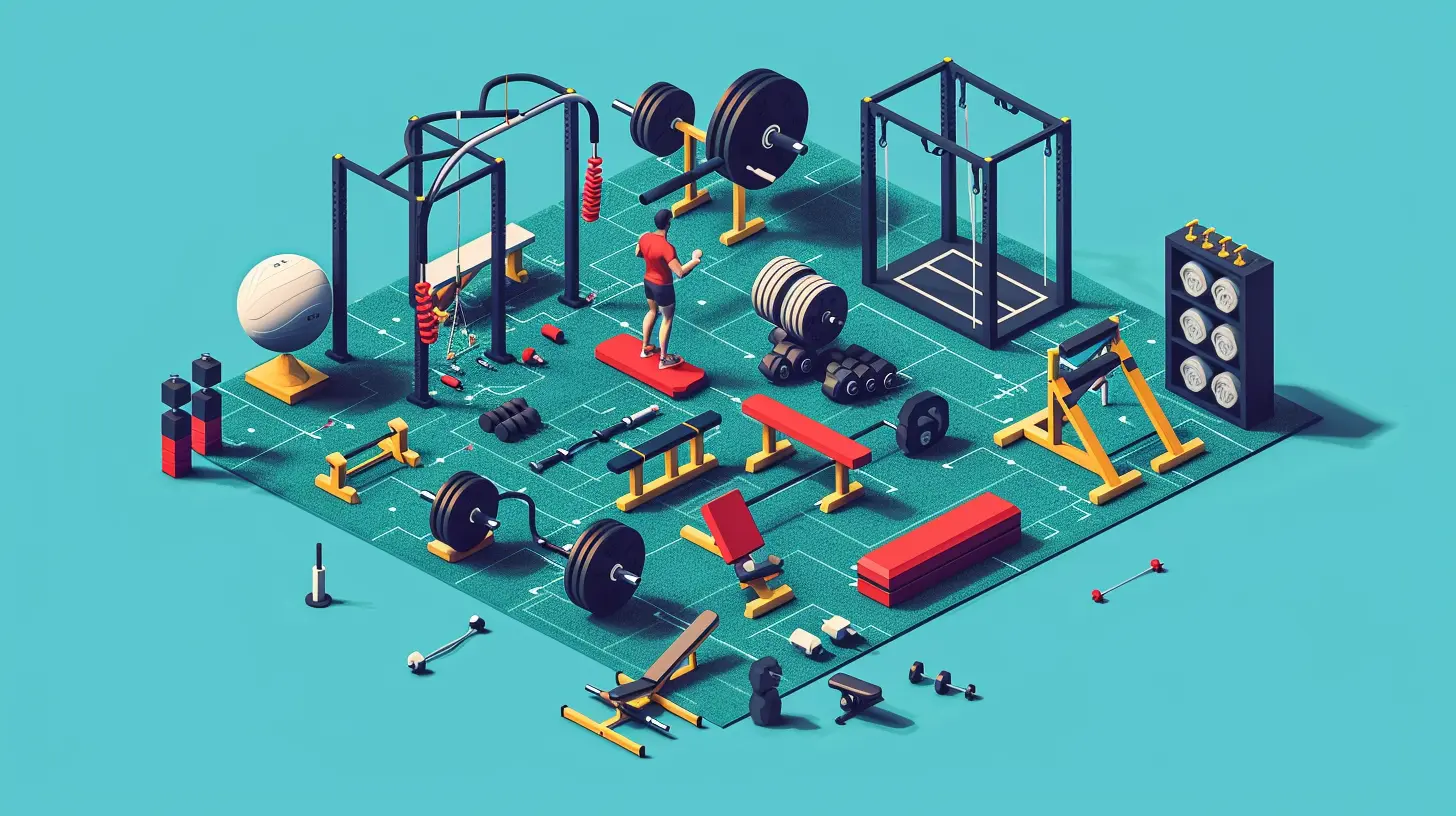Isometric Exercises: The Science Behind Static Strength Training
12 November 2025
So, you're hitting the gym regularly, chasing those gains, but maybe you’ve hit a plateau? Or perhaps you're looking to spice up your current workout routine with something a little different but equally effective? Well, you’ve come to the right place. Let’s talk about isometric exercises — the unsung hero of strength training.
Isometric training isn’t just another fitness fad. It’s backed by solid science, and when done right, it can deliver some seriously impressive results. Whether you're a gym rat, a weekend warrior, or just getting started on your fitness journey, understanding isometric exercises can be a game-changer.

What Are Isometric Exercises Anyway?
Alright, let’s clear this up straight away. Isometric exercises are strength training movements where the muscle length and joint angle don’t change during contraction. In plain English? You hold a position rather than move through a range of motion. It’s like flexing your bicep without curling anything — feel the burn, right?The word “isometric” comes from the Greek words "iso" (equal) and "metron" (measure), which makes total sense because your muscles are contracting without moving — holding steady under pressure.
Picture this: pushing against a wall, holding a plank, wall sits — these are classic isometric moves. You’re working your muscles like mad, but nothing’s moving.

Why Should You Care About Isometric Exercises?
Good question! Let’s be honest: static exercises don’t look nearly as hardcore as deadlifts or box jumps. But don’t judge a book by its cover. Isometric training offers a ton of benefits that make it worth your while, especially if you're striving for strength, stability, and joint health.Here’s why you should care:
- They build real-world strength — the kind that helps you carry groceries, hold a yoga pose, or grind through a tough workout.
- Low risk of injury — you’re not throwing heavy weights around, so the chances of hurting yourself are lower.
- They improve stability and muscular endurance, which carries over into both athletic performance and daily life.
- Perfect for rehab or post-injury workouts — when your body needs strengthening without excessive movement.
Basically, they pack a punch without all the motion.

The Science of Isometric Muscle Contraction
Let’s geek out for a second. When you perform any resistance exercise, your muscles contract in one of three main ways: concentric, eccentric, and isometric.- Concentric means the muscle shortens (like lifting a dumbbell).
- Eccentric means the muscle lengthens under tension (like lowering that dumbbell).
- Isometric means the muscle contracts without changing length (like holding that dumbbell halfway through the curl).
Isometric contraction occurs when the muscle generates force equal to the resistance. Think of it like a tug-of-war where both sides are perfectly matched — tension without movement.
Studies have shown isometric training recruits high amounts of motor units, which means a bunch of muscle fibers are firing up during these holds. This kind of sustained contraction leads to gains in both maximal strength and neural adaptation — your brain and muscles get better at communicating and working together.
Pretty cool, right?

Benefits of Isometric Exercise (Backed by Science)
Alright, let’s get into the nitty-gritty. Here’s what the research and real-world experience tell us about the benefits of static strength training:1. Builds Raw Strength
Holding a plank for 60 seconds might sound basic… until you try it. Isometric training creates intense muscular tension, which builds strength. And here's the kicker — it emphasizes joint angle-specific strength. That means you can target your weak points. Can’t lock out a bench press? Hold it at the sticking point.2. Strengthens Connective Tissue
Isometrics put sustained pressure on your tendons and ligaments in a low-risk way. This kind of stress encourages tissue remodeling and resilience, which makes your joints feel more stable and less achy over time.3. Boosts Muscle Activation
Isometric holds force you to engage every fiber in the muscle group involved. There’s nowhere to hide. You're pushing or pulling with maximum effort, so the muscle activation is off the charts.4. Time Under Tension (TUT)
One of the keys to building muscle is keeping it under tension long enough to cause micro-damage and stimulate repair. Isometric exercises do exactly that — in spades. You're not just going through the motion; you're staying in the zone.5. Great for Injury Rehab
Whether it's a bad knee, strained shoulder, or chronic back pain, isometric training is often used in physical therapy. It's safe, controllable, and helps maintain muscle mass during recovery.6. Mental Toughness
Let’s not forget the mental side of fitness. Holding a wall sit for 90 seconds? That kind of suck builds character. These holds challenge your mental grit just as much as your muscles.Popular Isometric Exercises You Can Try Today
Ready to give it a shot? Here are a few excellent isometric exercises to fold into your current routine. The best part? No fancy equipment needed.1. Plank (Core)
How to do it: Get into a push-up position with your forearms on the ground. Keep your body in a straight line from head to heels. Hold as long as you can.Target muscles: Abs, shoulders, lower back
2. Wall Sit (Legs)
How to do it: Slide down a wall until your knees are at a 90-degree angle. Hold like you're sitting on an invisible chair.Target muscles: Quads, hamstrings, glutes
3. Glute Bridge Hold (Posterior Chain)
How to do it: Lie on your back with feet flat on the ground. Lift your hips and squeeze your glutes at the top. Hold that position.Target muscles: Glutes, hamstrings, lower back
4. Isometric Push-Up Hold (Chest + Core)
How to do it: Lower yourself halfway down in a push-up and hold. Keep your core tight and back straight.Target muscles: Chest, triceps, core
5. Static Lunge Hold
How to do it: Get into a lunge position and stay there. Make sure your front thigh is parallel to the floor.Target muscles: Quads, glutes, calves
How to Incorporate Isometrics into Your Workout
You don’t have to overhaul your entire workout plan to take advantage of isometrics. In fact, you can plug them into your existing routine in several smart ways:Add Holds to Traditional Exercises
Halfway through a squat? Pause and hold for five seconds before finishing the rep. This doubles down on muscle activation and intensity.End-of-Set Burnouts
After your last set of push-ups, hold the bottom position until failure. These little “finishers” torch your muscles and boost endurance.Active Recovery Days
Sore but still want to train? Use isometric exercises for a low-impact workout that still builds strength.Improve Weak Points
If you struggle with a certain part of a lift (like the bottom of a squat), hold that position to strengthen the sticking point.Training Tips for Maximum Gains
Want to get the most from your static strength sessions? Keep these tips in your back pocket:- Breathe — don’t hold your breath! Breathe deeply and steadily; it reduces blood pressure spikes.
- Try timed sets — start with 15–30 seconds per hold, then build up as you get stronger.
- Focus on form — sloppy form = wasted effort and possible injury.
- Go to failure sparingly — yes, it builds mental toughness, but don’t overdo it. Allow recovery.
- Combine with dynamic training — Isometrics are great, but mixing them with traditional strength and mobility work gives the best results.
The Downsides (Yep, There Are a Few)
No training method is perfect, and isometric training has a couple of caveats.For one, isometric strength gains are joint-angle specific. That means improvements happen mostly at the angle you're holding. So, to get full range-of-motion benefits, you’d need to hold at different angles — not always practical.
Also, without movement, cardiovascular benefits are pretty limited. So, if you're chasing heart health or fat loss, you'll have to supplement with cardio and dynamic resistance training.
Lastly, while they're great for strength and stability, they don’t do much for muscular power or speed. So athletes might want to use them as a complement, not a replacement.
Are Isometric Exercises Right for You?
If you’re someone who wants functional strength, better joint health, or just a new way to train that doesn't involve pounding your joints with high-impact moves, absolutely.They're perfect for:
- Beginners looking for simple but effective bodyweight workouts
- Lifters needing help with sticking points
- Athletes recovering from injury
- Busy folks who want quick workouts with minimal equipment
And honestly, even the most advanced lifters benefit from including some isometric work. It’s like adding spice to your fitness stew — more flavor and better results.
Final Thoughts
Isometric exercises might not look flashy on Instagram, but don’t underestimate their power. Holding still doesn’t mean standing still in your fitness journey. These static movements can build muscle, boost strength, improve joint health, and crank up mental toughness.So next time you hit the gym or roll out your yoga mat at home, throw in a few planks, wall sits, or push-up holds. Your muscles might shake, and your mind might scream — but your body will thank you.
Your strength doesn’t always come from moving fast and hard. Sometimes, it’s about holding strong and staying still.
all images in this post were generated using AI tools
Category:
Sports ScienceAuthor:

Nelson Bryant

